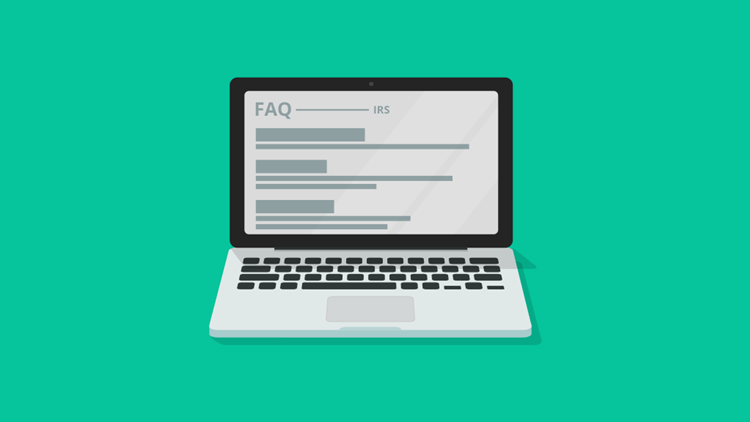
The Internal Revenue Service is updating its Frequently Asked Questions to reflect changes on two fronts important to a lot of taxpayers.
The changes, in the form of revamped and increased guidance, are focused on the unemployment compensation exclusion for 2020, and the Recovery Rebate Credit for 2020.
Unemployment Compensation Exclusion
The American Rescue Plan made the unemployment compensation exclusion possible for 2020 filers. When a taxpayer’s account is corrected for the exclusion, the agency will mail a notice to the taxpayer, notifying them of the correction.
While the unemployment compensation exclusion, as explained in the IRS Fact Sheet 2022-01, is worth up to $10,200 for eligible taxpayers – or up to $10,200 for each spouse if married filing jointly – it doesn’t necessarily mean a taxpayer will receive that amount as a refund.
The exclusion allows qualified taxpayers to remove that amount from their taxable income, and so lower their tax liability for 2020. The exclusion could mean a refund to those taxpayers who have overpaid their unemployment compensation taxes, but it may not equal the maximum exclusion amount.
If the exclusion adjustment leads to a refund, the IRS says it will reach the taxpayer in one of two ways.
If the taxpayer’s bank account information is on file with the IRS, they’ll send the refund by direct deposit into the account. If the account isn’t on file, the taxpayer will instead receive a check by mail.
One important update to the FAQs lets taxpayers know that if they owe money to state or local governments, those debts could be repaid out of any refund they get in the unemployment compensation exclusion.
These debts can include past-due federal tax, state income tax, state unemployment compensation debts, child support, spousal support, or certain federal non-tax debts, such as student loans.
Taxpayers whose refunds go to pay such debts, called offsets, will get a notice from the IRS alerting them to the payments.
Recovery Rebate Credit
The second area to get the update treatment covers the payment of the Recovery Rebate Credit, and focuses on finding and using the first two Economic Impact Payment (EIP) amounts to calculate the credit for 2020.
Taxpayers who got the full amount of the Economic Impact Payments don’t need to claim the Recovery Rebate Credit on their 2020 tax return. A taxpayer got the full EIP if:
- The first Economic Impact Payment was $1,200 ($2,400 if married filing jointly) plus $500 for each qualifying child they had in 2020; and
- The second Economic Impact Payment was $600 ($1,200 if married filing jointly) plus $600 for each qualifying child they had in 2020.
A worksheet included in the 2020 Form 1040 and Form 1040-SR instructions can help taxpayers figure their eligibility.
The IRS says the first place to start to find if a taxpayer received both EIPs is to log into their online account with the IRS.
If a taxpayer qualified for an Economic Impact Payment and did not receive it, they can request a payment trace from the IRS. The agency stresses though, taxpayers should request a trace if their online account shows a first or second EIP was issued to them and they did not receive it.
Traces can’t be used to determine if a taxpayer was eligible for a payment, or to confirm the amount of payment the taxpayer should have gotten.
Taxpayers should call the IRS at 800.919.9835 to request a trace. They can also mail or fax a completed Form 3911, Taxpayer Statement Regarding Refund.
The IRS says generally taxpayers will hear back from them in about six weeks after they get the request for a trace. However, limited staffing may create delays. They also remind taxpayers NOT to file Form 3911 if they’ve already requested a trace by telephone.
For more on the updated FAQs on the Recovery Rebate Credit, check out IRS Fact Sheet 2022-02.
Sources: “2020 Unemployment Compensation Exclusion FAQs — Topic G: Receiving a Refund, Letter, or Notice“; “Recovery Rebate Credit — Topic F: Finding the First and Second Economic Impact Payment Amounts to Calculate the 2020 Recovery Rebate Credit“
